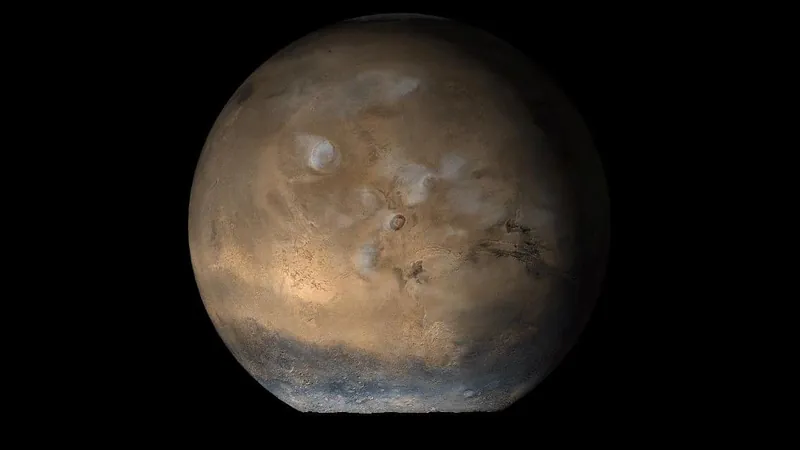
Don't Miss the Spectacular Moment When the Moon 'Swallows' Mars!
2025-01-08
Author: Jacques
Prepare your stargazing gear because an extraordinary celestial event is about to unfold! On January 13, 2025, Mars will make a dramatic disappearance behind the moon in a fascinating astronomical occurrence known as a lunar occultation.
This thrilling event coincides with Mars being in opposition, positioned directly opposite the sun from Earth's perspective. This alignment means that Mars will be at its fullest, brightest, and closest to Earth, making this the perfect time for enthusiasts and casual observers alike to witness the Red Planet in all its glory.
What is a Lunar Occultation?
A lunar occultation happens when the moon passes in front of a planet, temporarily obscuring it from view. For this particular lunar occultation, the U.S. will be treated to an exceptional sight as it's the only time in 2025 that Mars will be concealed by the moon. Don’t let this rare opportunity slip away!
To maximize your viewing experience, it's best to find a dark area away from city lights. Give your eyes about 20 minutes to adjust to the darkness for optimal viewing. The lunar occultation will be visible across the contiguous United States, parts of Canada, Mexico, and Western Africa—making it a prime event for many skywatchers.
Key Viewing Times for January 13, 2025
- **Rise Time**: Both the moon and Mars will rise around 5 p.m. EST. - **Set Time**: They will set together around 8 a.m. EST on January 14. (Times may vary by location.) - **Occultation Start**: Mars will disappear at 8:44 p.m. EST. - **Occultation End**: Mars will re-emerge at 12:52 a.m. EST on January 14.
To fine-tune your timing, you can consult interactive sky maps that allow you to input your location for precise start and end times.
What to Expect During the Event
Mars will be distinctly visible to the naked eye, shining brightly with a soft golden hue. However, using high-powered binoculars or a quality telescope will enhance your experience, revealing the stunning details on both Mars and the moon. You may be lucky enough to glimpse Mars’ northern polar ice cap and the vast Valles Marineris, the largest canyon in our solar system, which stretches over 1,900 miles (3,000 kilometers) long!
This cosmic spectacle isn't just a visual treat; it's also a fantastic opportunity to connect with fellow astronomy enthusiasts. So, gather your friends or family, prepare your equipment, and get ready for a night of unforgettable stargazing!
Why You Shouldn't Miss It
This celestial event is not just about seeing Mars disappear behind the moon; it's about the thrill of witnessing a rare cosmic dance. With every fifth year presenting a unique opportunity, mark your calendars for January 13, 2025—you certainly won’t want to miss the chance to witness the moon 'swallowing' Mars. Get excited, and happy stargazing!









 Brasil (PT)
Brasil (PT)
 Canada (EN)
Canada (EN)
 Chile (ES)
Chile (ES)
 Česko (CS)
Česko (CS)
 대한민국 (KO)
대한민국 (KO)
 España (ES)
España (ES)
 France (FR)
France (FR)
 Hong Kong (EN)
Hong Kong (EN)
 Italia (IT)
Italia (IT)
 日本 (JA)
日本 (JA)
 Magyarország (HU)
Magyarország (HU)
 Norge (NO)
Norge (NO)
 Polska (PL)
Polska (PL)
 Schweiz (DE)
Schweiz (DE)
 Singapore (EN)
Singapore (EN)
 Sverige (SV)
Sverige (SV)
 Suomi (FI)
Suomi (FI)
 Türkiye (TR)
Türkiye (TR)
 الإمارات العربية المتحدة (AR)
الإمارات العربية المتحدة (AR)